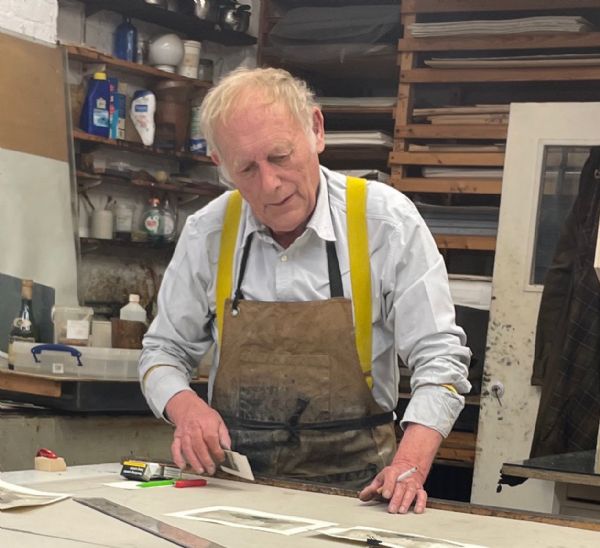Based in Bermondsey in London, Norman Ackroyd RA (b. 1938) is one of Britain's most celebrated contemporary printmakers. Originally from a working-class area of Leeds, he started working from an early age in his family’s local butchers, alongside his father and older brothers. However, spurred on by his mother and art teacher, he soon made the brave and unexpected move towards a career in art.
Today, he is primarily known for his captivating etching and aquatint landscapes, whose processes can be likened to engraving using acid. Aquatint is actually a variant of etching which produces different tones rather than lines. However, Ackroyd does often experiment with watercolours, his preferred medium when working directly onto paper.
He began his artistic training at the Leeds College of Art where he studied from 1956-61 and after this time, he went on to study at the Royal College of Art in London under the prominent artist Julian Trevelyan. He first rose to prominence as a landscape artist in the 1980s. Despite growing up in an heavily industrialised area, he has always had a keen excitement for landscape, nurtured by boyhood bicycle rides in the Yorkshire Dales.
Since his earlier years of success, he has been appointed Professor of Etching at the University of the Arts, elected a Royal Academician and also elected a Senior Fellow at the Royal College of Arts. In 2007, he was awarded a C.B.E for Services to Engraving and Printing. He has had numerous solo exhibitions in the UK and internationally, and his work can be found in public collections across the UK, Europe and the US, as well as in South Africa and Australia.
